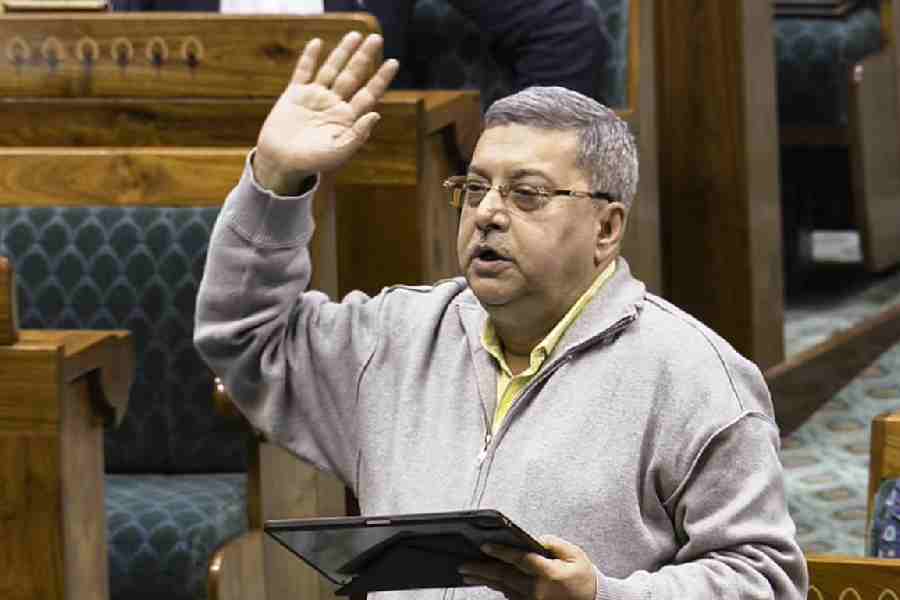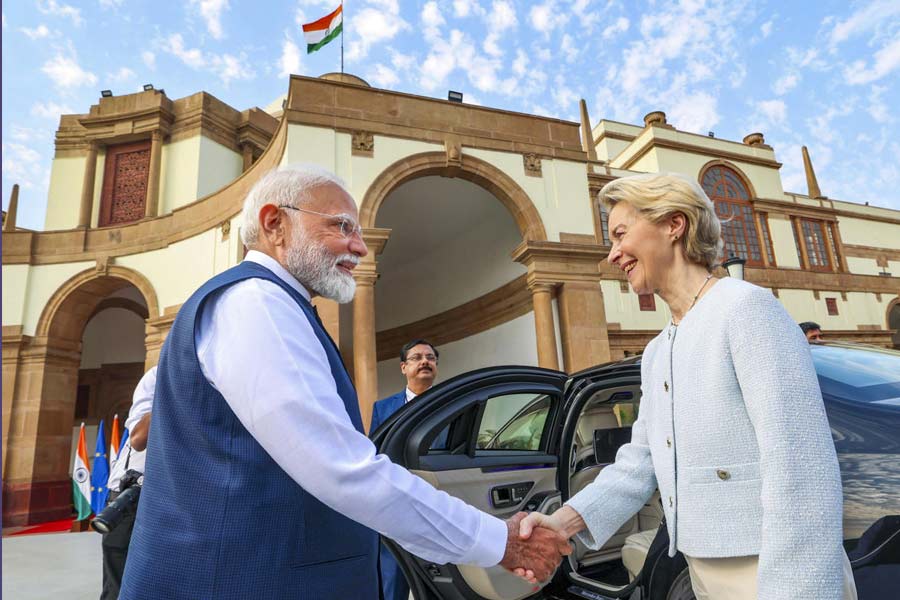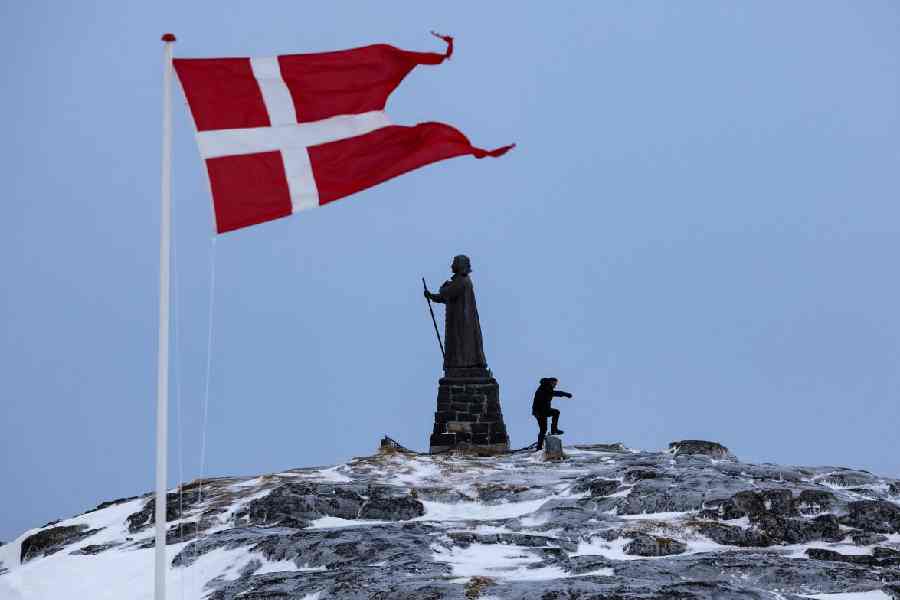For more than a week, the young men of Soura, a densely populated enclave in Srinagar, have been taking turns to maintain a round-the-clock vigil at the entry points to their neighbourhood.
Each of the dozen or so entrances has been blocked with makeshift barricades of bricks, corrugated metal sheets, wooden slabs and felled tree trunks. Groups of youths armed with stones congregate behind the biggest obstacles. The aim: to keep Indian security forces, and particularly the paramilitary police, out of the area.
“We have no voice. We are exploding from within,” said Ejaz, 25, who like many other residents in Soura interviewed by Reuters gave only one name, saying he feared arrest. “If the world won’t listen to us too, then what should we do? Pick up guns?”
Soura, home to about 15,000 people, is becoming the epicentre of resistance to the government’s plans to remove the partial autonomy that was enjoyed by Jammu and Kashmir.
The enclave, which has effectively become a no-go zone for the security forces, is now a barometer of the ability of Prime Minister Narendra Modi’s government to impose its will in Kashmir after its dramatic move on August 5 to tighten its control over the region.
The change, the government said, was necessary to integrate Kashmir fully into India, tackle corruption and nepotism, and speed up its development, which Modi says is the key to securing lasting peace and defeating terrorism.
In Soura, it’s hard to find anyone who supports Modi’s move. Many of the more than two dozen residents interviewed by Reuters over the past week referred to the Prime Minister as “zaalim (tyrant)”.
The constitutional change will allow non-residents to buy property in Jammu and Kashmir and apply for jobs in local government. Some Muslims say they fear that Hindus will overrun the state, and Kashmiris’ identity, culture and religion will be diluted and repressed.
“We feel like we are guarding the LoC here,” said Ejaz.
Residents in Soura say dozens of people have been injured in clashes with the paramilitary forces over the past week. It is unclear how many have been detained.
A spokesman for the Jammu and Kashmir administration declined to answer questions from Reuters. The Union home ministry did not return calls and emails seeking comment.
The battle over Soura has received little coverage in the Indian media. That is partly because of the communications blackout in the region but also as many local TV channels and newspapers have emphasised the government’s position — that there is little resistance in Kashmir to its plans.
In Soura, the reality is different.
Landline phone service has begun to return to the region but not to Soura, which has a well-regarded teaching hospital.
Residents have found other ways to organise. When they spot security forces trying to enter the area, residents say they rush to a mosque and sound the alarm by playing a devotional song calling for people to “stand against illegal occupation”, or by issuing an alert over the loudspeaker.
At intersections in the warren of narrow lanes that make up Soura, a largely lower middle class area with a lake and marshy wetlands to its west, there are piles of bricks and stones for use against Indian troops.
At one barricade, concertina wire had been strung across the road. The young men patrolling the barrier said the wire had been stolen from the security forces.
A protest on August 9, when people took to the streets after Friday prayers, marked Soura as the focal point of resistance to the government’s decision. As residents from surrounding neighbourhoods joined the demonstration, the crowd swelled to at least 10,000, according to local police sources.
More than a dozen residents told Reuters that around 150 to 200 security personnel in riot gear attempted to enter Soura after the protests, resulting in clashes with residents that went on late into the night, as the police fired tear gas and metal pellets.
The government initially denied there had been a protest, and said there had been no gathering in Soura involving more than 20 people. It later said there had been a demonstration of 1,000 to 1,500 people, after TV footage of the crowd was broadcast by the BBC and Al Jazeera.

Since then, Soura has been the scene of smaller demonstrations and daily running battles with the security forces, according to people living in the neighbourhood.
The security forces have made several attempts to enter Soura, according to residents, with the apparent goal of sealing off a large area of open ground next to the Jinab Sahib shrine that has become an assembly point for protesters.
“Every day they are trying to attack us here, but we are fighting back,” said Owais, in his early twenties. “We feel like we are trapped.”
The paramilitary forces say they are determined to regain control of the area. “We have been trying to enter, but there is a lot of resistance in that neighbourhood,” said a paramilitary official in Srinagar who spoke on the condition of anonymity.
Another senior security official told Reuters on the condition of anonymity that “some of the youths of the area are highly radicalised” and it is “a hotbed of militancy”. Militant groups, he said, were influential in the area.
While the level of support for Islamist groups in Soura is unclear, posters with pictures of militants can be seen on many walls and electricity poles.
Fearing a crackdown by security forces, some traders selling Kashmiri Pashmina carpets and shawls here have shut shop. Fishing and lotus farming in the enclave’s polluted Anchar Lake continues, but those involved say it is difficult to get their produce out of the area.
The security situation means people’s movements are restricted. Paramilitary police are present at every exit route from Soura. Surveillance drones and helicopters have been seen flying over the area.
Some local people said the security forces were keeping a close watch on the local hospital, the Sher-i-Kashmir Institute of Medical Sciences, with the aim of arresting injured protesters. People who have been hit by pellets fired by the security forces say they have avoided going to hospitals because they fear being detained.
“We don’t go to the hospital unless it’s something serious or we’re hit in the eye,” said Yawar Hameed, a physiotherapist who has been helping the injured.
In a two-storey wooden home, Hameed was bent over 45-year-old Bashir Ahmed, cleaning a pellet wound near Ahmed’s left eye with a swab of cotton wool dipped in Betadine disinfectant.
But Hameed, 23, had no training for treating pellet wounds, he said.
Ahmed winced in pain as Hameed used forceps to remove a pellet from his lower back. After several attempts, he succeeded in extracting a small silver metal ball.
Minutes later, two young men were brought into the room. They knelt down and pulled off their T-shirts, revealing bloody marks across the front of their torsos where they had also been hit by pellets.
“If we have to live here, we need to know how to do this,” said Hameed.











